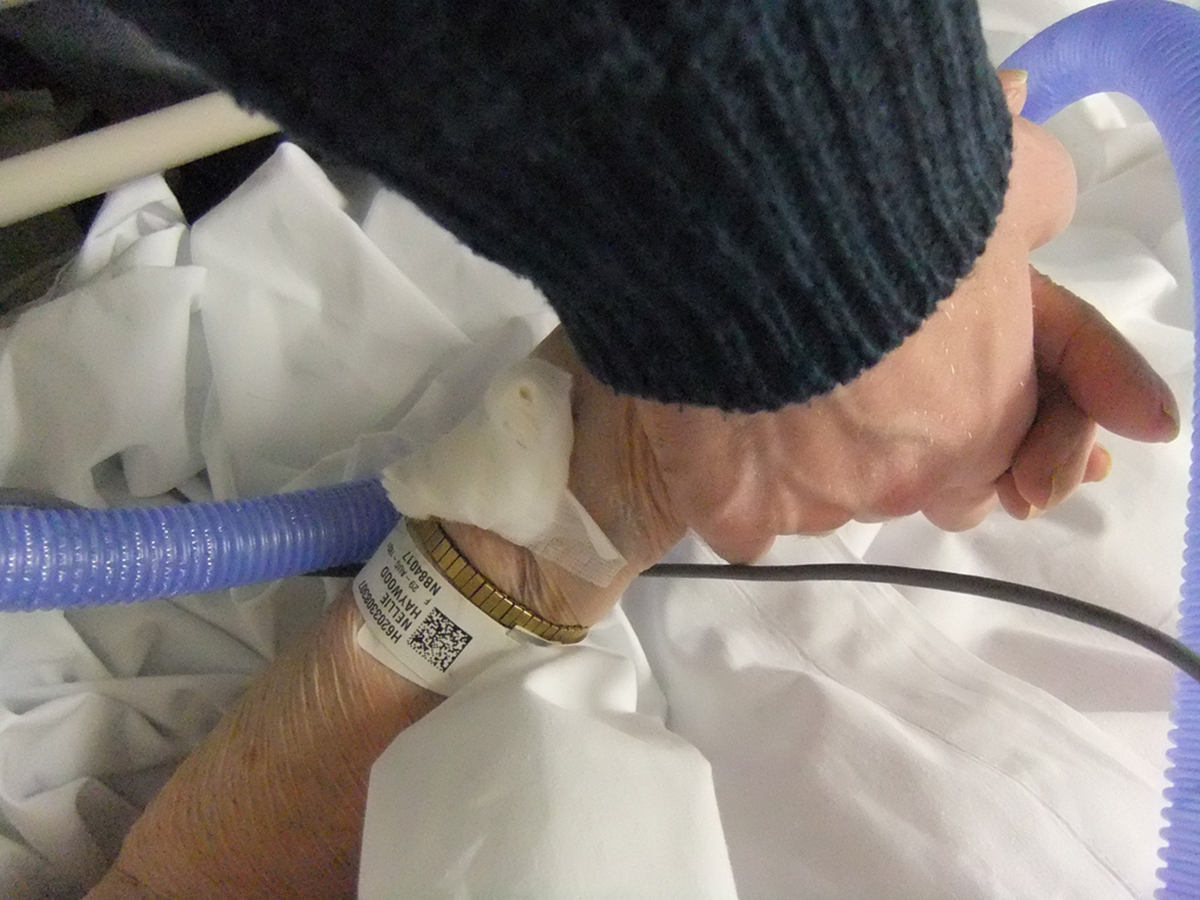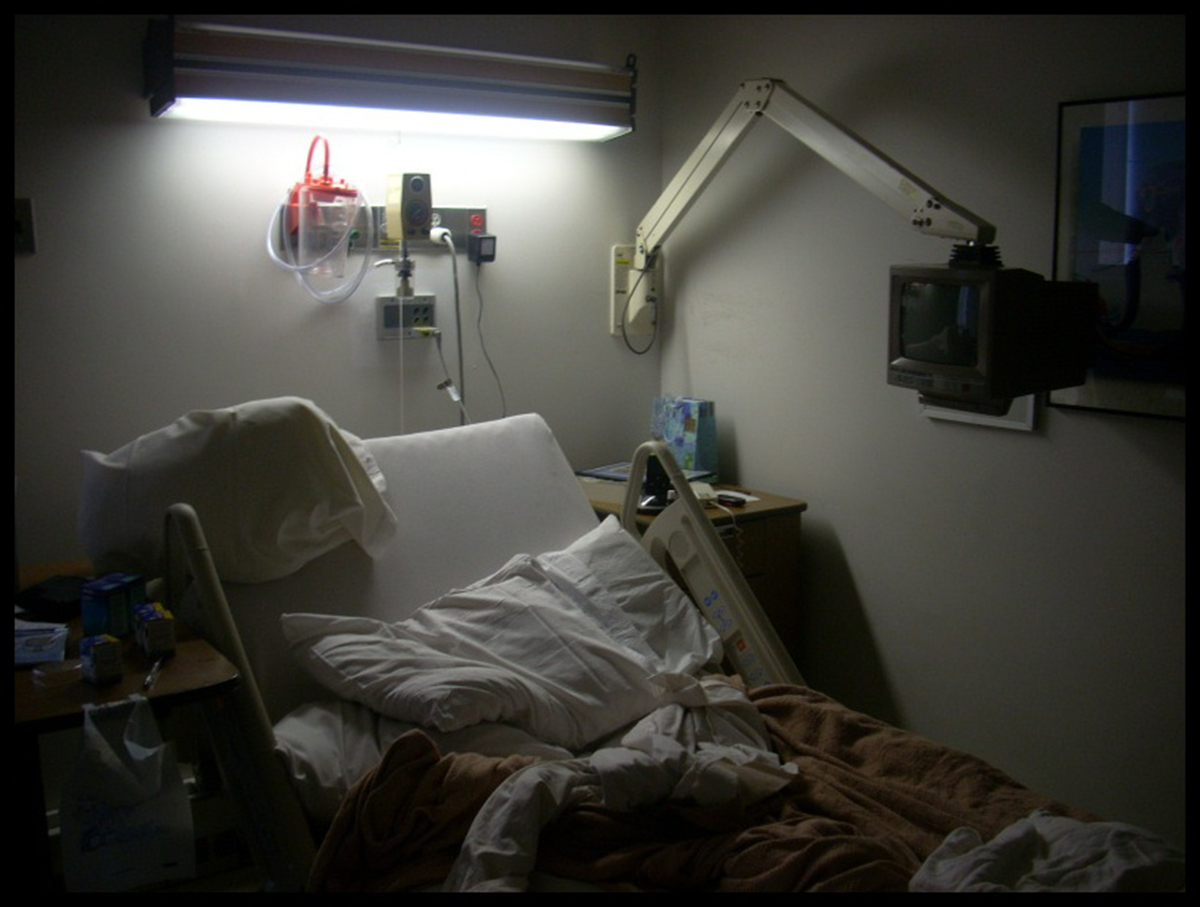One of the inevitable results of modern medicine is that the better doctors are at treating the diseases of old age, the more enfeebled elderly patients there are to treat. The more doctors tell us that we can live to be 90, 100, or even more, the more people there are who are proof of the mortality that waits each of us.

For most people, it's almost as if they were programmed to fight for life. But a better approach to the reality of death is, in this writer's opinion, to live each day as fully as possible as long as possible, without extending life out of fear of death.
The Tyranny of Safety Precautions
Most older people face restrictions in lifestyle long before the end. First they are displaced by younger people at work, or they are told they are not fit for work (as often happens to drivers, pilots, surgeons, and even ministers). Then they have to deal with restricted finances, and family members offer to “help” by managing their finances. They are told they can't drive, and they can't live alone, and they can't live in their own homes, and finally they are told they are soon to die—but that wouldn't be a good thing.
Saving Treatment for the End
Frantic efforts are often made to extend life. In the United States, about 1/3 of all spending on healthcare occurs in the last month of life. People are put on life support without the ability to tell doctors to pull the plug, and family members fight over the right to withhold or continue treatments that may extend life a month, or a week, or a day, or a few hours. It's not unusual for cancer patients to be given drugs that cost as much as $90,000 a dose that promise maybe to extend life 3 or 4 weeks, and most (but not all) doctors will authorize last-ditch treatments when patients ask for them, if there is insurance coverage or the patient can pay cash.
See Also: How to overcome grief & loss of a loved one?
There Has to Be a Better Way
But what if end of life care were about making the most of life rather than avoiding death. While a patient is still capable of making and communicating decisions, why not ask:
- What do you need to minimize pain?
- What can care providers do right now to add pleasure to your life?
- What are your greatest fears?
- What is your greatest hope?
- What can we do that brings you joy and enjoyment right now?
It isn't necessary to know the time, how you'll feel, and even where you'll “go” if you are as fully engaged in the present as possible.
Ten Observations About Living Last Days Well
I am not a professional or an expert on hospice care, but I can offer ten personal observations of what helps people enjoy their last days more. They are only commonsensical, but the end of life is a time, as many people know, when common sense has a tendency to fly out the window. Here is what I think I know.

1. Even if you don't deal with death well, go to see your family members and friends in hospital or hospice.
Visiting dying people isn't about you. It's about them. An effort to be present for the person you love is the primary requirement.
Your loved one's personality is not likely to change when they are in hospice. They will be the same person they were before.
2. It's OK to cry, as long as you don't make their illness all about you.
Genuine tears show how much you care. Some cultures do not permit men to cry, and a loved one's death bed is not the place to have a long discussion on how modern men can cry. But tears, and fighting them, communicate how deeply you feel.
3. It's OK to take children to see the dying.
Grandparents, in particular, long to see their grandchildren. Make the visit to the hospice about making the dying person happy, and give children memories of their loved ones while they were alive.
4. A “Do Not Resuscitate” (DNR) does not necessarily mean someone will not be resuscitated.
DNR's usually apply to out-of-hospital treatment. A patient will not be resuscitated in a hospice, but emergency medical personnel will follow their own rules regarding such an order. Different political jurisdictions handle Speak with your family member or friend about their wishes as early in the course of their illness as possible to know how they want to be treated (or not).
5. The more money is spent on end of life care, the more miserable the patient is during it.
Extraordinary medical interventions are extraordinarily expensive, and they take away opportunities to talk with loved ones, to eat, to listen to music, to engage with the healthy world. When a lot of money is being spent on medicine, usually not enough money is being spent on the simple pleasures of life.
6. The exact timing of natural death is unpredictable.
Doctors, nurses, and hospice workers usually have a sense of how long someone will last. People often live longer or seem to choose a moment for death for their own reasons. Some people will want to be surrounded by people to the very end (my mother did), and some will want to be alone when they pass away (my father did).
And some people don't seem to care one way or the other. Each person is different.
7. Doctors, nurses, and hospice workers usually recognize death as it is rapidly approaching.
In certain physical conditions, heart disease and lung disease for example, there can be unmistakeable signs of the end, rales of short breath, or a distinctive EKG pattern, for example. Usually when a professional tells a family member “Come quick,” there isn't an option for later.
8. People who appear to be comatose sometimes aren't.
A 94-year-old friend of mine was losing her battle with a recurrence of colon cancer. She lay on her bed still, barely breathing. Her family waited in the lobby, not visiting her for two days. I asked if I could go in, the family said yes, so I sat down, held her hand, and filled in on local events of the week as I would have when she was well. After 10 minutes or so she squeezed my hand, and smiled, and then went back to being still. She died the next day. I felt we had had a last chat. She just didn't talk very much.
See Also: World Health Assembly Makes Care For The Dying A Priority
9. Dying people often speak in metaphors.
My father was a fan of seedless watermelon, and I took him a seedless watermelon (that I bought in the dead of winter) a few days before he died. “I'm going to save this to eat it with your (previously deceased) mother,” he told me. Many people speak of getting ready for a trip, or being relieved of their burdens. A few hours before he died, my father told me about a persistent family issue, “You have to deal with it now,” and he laughed. So did I.
10. People who are dying often seem to be here and not here.
People tend to see the religious figures they expect to see, and many people in North America and Europe do not see religious figures at all.
Physically dying may be difficult, but death is peaceful. Carry good memories through your own life by being present for the people you love.
- Paula Spencer Scott. The Passing: What to Expect When Witnessing a Loved One's Death. Www. Caring.com. Accessed 23 October 2014.
- Photo courtesy of Lee Haywood by Flickr: www.flickr.com/photos/leehaywood/5266525534
- Photo courtesy of Dan Cox by Flickr: www.flickr.com/photos/dancox_/2632603962


Your thoughts on this